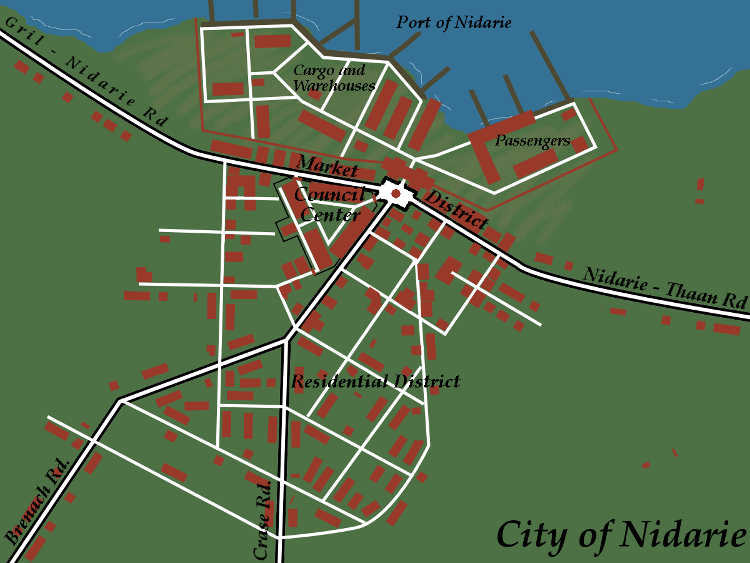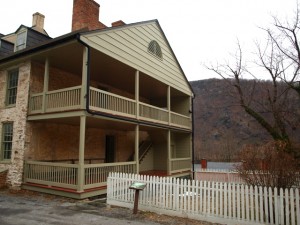
The city of Nidarie
Nidarie, the capitol city of Meinah, is located on the southern shore of Nidarie Lake, which itself is accessible by sea faring ships through the maintained Grache Shipping Channel to the north.
The most diverse and one of the largest cities in the country, a good portion of Meinah’s goods come in here, which has spawned an ever changing marketplace of traveling merchants from far off lands, and various trade offices where people from around the neighboring cities come to find representatives who will then market their goods to the various foreign traders. Members of every race live here, including dragons. Because of the heavy passenger and ship-crew influx there are many inns, taverns, and boarding homes as well as employment offices for new immigrants to find work and ships captains to recruit new sailors.
Nidarie, as the capitol, is also home of the Meinan Council. Directly across the city square from the massive gate and immigration/customs office stands the main entrance to Council Square and the Council Center. Four massive structure stand in a triangle, with a grand garden courtyard in the middle. The northernmost building which lines one side of the road to Gril is the meeting hall where the Council Meeting Gallery, Public Hearing Hall, and cabinet meeting rooms are located. To the west of this building is an educational center where young people can apprentice to become aids to council members, and perhaps someday become members of the council themselves. The building directly south of this is the housing for aids and bunk rooms for trainees. Forming the third side of the triange, along the Brenach-Crase joint Road, is the housing for high members of the council, and dormitories for those members who do not stay in Nidarie when the council is not in session. Lodging here is made up of very well furnished luxury suites which few outside of the council ever see. The last and smallest building in the Council complex, within the iron fence, is lodging for service staff and the on-site council guard. The guards for the three gates and various halls as well as cleaners, cooks, gardeners and other such workers all live here in barrack like dormitories.
Along the Gril-Nidarie-Thaan Road is the marketplace, and to the south of the Council Center is primarily residential housing.
Eventually many market and trade activities not required to be along the docks will move to Thaan, to reduce congestion and improve security within the city.
Architecture

This consists highly of traditional Dutch and English influenced construction. Prominent granite and marble brick municipal and religious structures, stone houses and business fronts with large open windows and plastered wood upper levels, and all wood timber constructions. Buildings are mostly rectangular in form and appearance, with thatched or (in the case of the wealthy) tin or slate roof. Outside of the city walls, the rural structures are vastly georgian style stone buildings.
In the case of great estate homes, these can be rather massive structures with one half for the owning family and the other half housing the estate’s workforce. Farms in this area tend to also lean toward the dutch design, and windmills of such style are also often seen on hills and in areas where a constant breeze is commonplace.
Population
Census 1500 2,052
Census 1650 8,230
Census 1725 14,100
Census 1775 15,550 (12,000 Human, 1,500 Elves, 550 Dwarves, 1,500 Other)